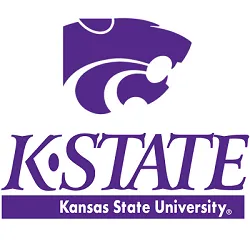K-State horticulture expert shares tips for harvesting and curing
MANHATTAN, Kan. — Many homeowners who have a black walnut tree in their yard look forward to the nuts it drops in the fall. Kansas State University horticulture expert Ward Upham said knowing what to look for is key to successfully harvesting and curing black walnuts.
“Black walnuts are ready to be harvested when the hull can be dented with your thumb,” Upham said. “You can also wait until the nuts start falling from the tree.”
Soon after harvesting, the hull – the hard outer coating of the nut – needs to be removed. If not removed in a timely manner, the stain from the hull can leech inside and discolor the meat. This staining will also result in an undesirable off-flavor.
Before hulling the nuts, ensure you wear gloves, Upham said. Black walnuts contain a stubborn dye that will stain concrete, hands, clothing, or anything it touches. Once it stains, the dye is almost impossible to remove.
With gloves on, there are several methods you can employ to hull the nuts. The nuts can be run through a corn sheller or pounded through holes in a board.
“The hole must be big enough for the nut, but smaller than the hull,” Upham said.
He recommends a simpler method: running over the nuts with a lawn tractor.
“This will break the hull but not crack the nut,” he said.
Hulled nuts can then be spread on the lawn or wire mesh and sprayed with water, or the nuts can be placed in a tub of water.
“If you place them in a tub, the good nuts should sink,” Upham said. “Those that float are probably not well-filled with kernels.”
Nuts can then be dried by spreading them in no more than three layers deep in a cool, dry place. A garage or tool shed will work. After about two weeks, the nuts should be dried and ready to enjoy by themselves or in your favorite fall dish.
Upham and his colleagues in K-State’s Department of Horticulture and Natural Resources produce a weekly Horticulture Newsletter with tips for maintaining home landscapes. The newsletter is available to view online or can be delivered by email each week.
Interested persons can also send their garden- and yard-related questions to Upham at wupham@ksu.edu, or contact your local K-State Research and Extension office.
-30-
FOR PRINT PUBLICATIONS: Links used in this story
K-State Horticulture Newsletter, https://hnr.k-state.edu/extension/info-center/newsletters/index.html
K-State Research and Extension statewide offices, www.ksre.k-state.edu/about/statewide-locations.html
K-State Research and Extension is a short name for the Kansas State University Agricultural Experiment Station and Cooperative Extension Service, a program designed to generate and distribute useful knowledge for the well-being of Kansans. Supported by county, state, federal and private funds, the program has county extension offices, experiment fields, area extension offices and regional research centers statewide. Its headquarters is on the K-State campus in Manhattan. For more information, visit www.ksre.ksu.edu. K-State Research and Extension is an equal opportunity provider and employer.
Source
Ward Upham
785-532-6173
wupham@ksu.edu
Written by
Taylor Jamison
tjamison@ksu.edu



